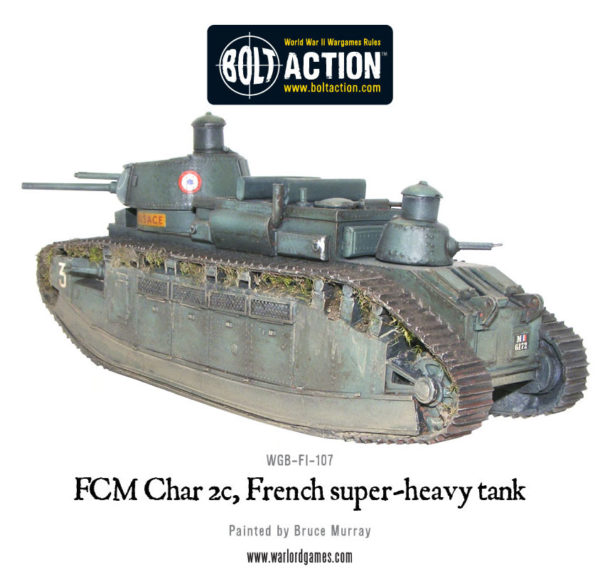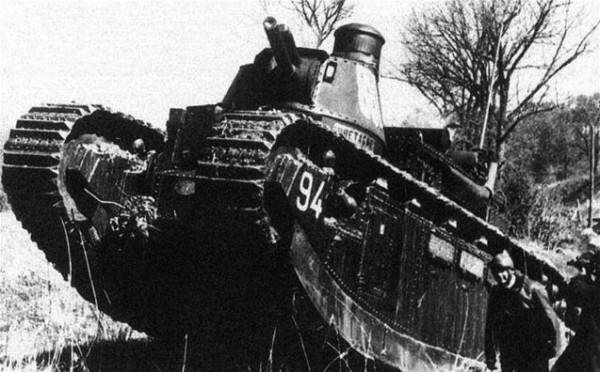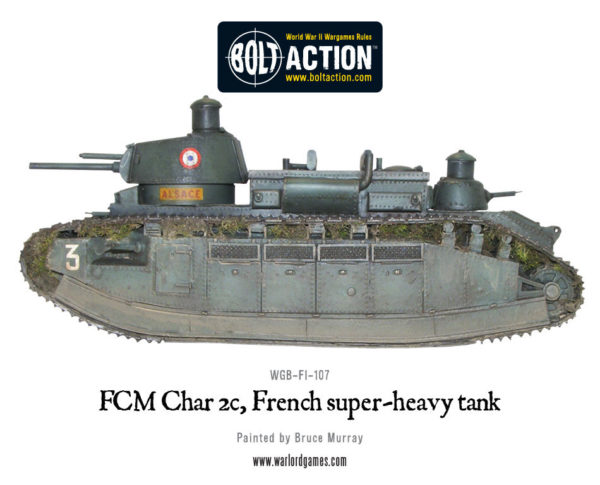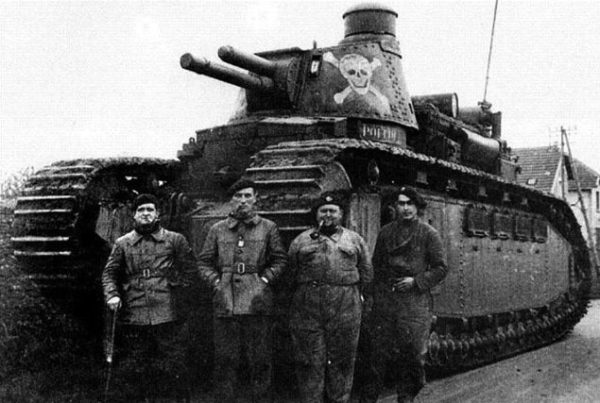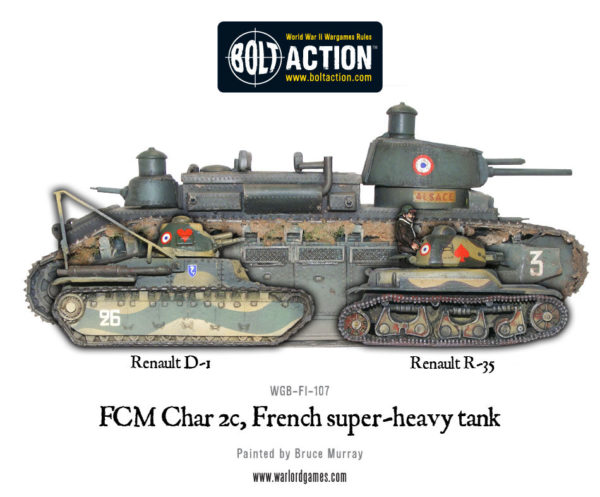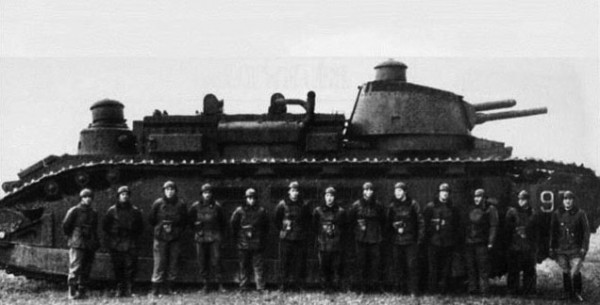Now for something a bit special – the Char 2c FCM – the only operational super-heavy tank in military history. This absolute beast will give the German panzer formations something to think about!
A fully loaded FCM Char 2C weighed in at a colossal of 69 tonnes. This was in no small part due to it’s armour – 45 mm at the front, 22 mm at the sides, but much of it just because of its huge size. It is still easily the largest tank ever taken into production. With the tail skid fitted, the hull was over twelve metres long.
Within the FMC CHar 2c’s armoured bulk were two fighting compartments. The frontal compartment mounted the first three man turret in history, its long 75 mm gun, had a stroboscopic cupola. The independent 8mm machine gun positions at the front gave protection against infantry assault.
The Char 2C is the only super-heavy tank ever to attain operational status — a super-heavy tank is not simply a very heavy tank but one that is much heavier than regular tanks of its period. The next operational tank to weigh about the same would be the Tiger II heavy tank. As you can see from the photos of our model on this page the Char 2C dwarfed regular French armour.
Each track of the Char 2c was powered by its own 200 or 250 hp engine to a top speed of 15 kmh. Its suspension contains 39 interleaving road wheels on each side, making for a total of 90 wheels on the tank.
Seven fuel tanks, containing 1,260 litres, gave it a range of 150 kilometres.
To man the tank required a crew of twelve: driver, commander, gunner, loader, four machine gunners, mechanic, electrician, assistant-electrician/mechanic and a radio operator.
Ten FCM Char 2cs ten tanks were produced. Their military value slowly decreased as more advanced tanks were developed throughout the 1920s and 1930s. By the end of the 1930s they were largely obsolete, because their slow speed and high profile made them vulnerable to advances in anti-tank guns.
Nevertheless, during the French mobilisation of 1939, all ten were activated and put into their own unit – the 51st Bataillon de Chars de Combat. For propaganda purposes, each tank had been named after one of the ancient regions of France: Poitou, Provence,Picardie, Alsace, Bretagne, Touraine, Anjou, Normandie (renamed ‘Lorraine’ in 1939), Berry and Champagne respectively.
As their main value was in propaganda, the armoured behemoths were carefully kept from harm and did not participate in the attack on the Siegfried Line in September 1939. They were used for numerous morale-boosting movies, climbing and crushing old French forts instead and to the public, they obtained the reputation of invincible super tanks.
The reality was that French commanders knew how undeserved this fictional reputation was. When the German Panzer divisions taking part in Operation Fall Rot ripped through the French lines in June 1940, the decision was made to prevent the capture of the famous equipment. They were to be sent to the south by rail.
On 15 June the trains and their giant cargo was blocked by a burning fuel train and to avoid the morale-boosting tanks from falling into enemy hands they were destroyed by demolition charges. The Germans claimed that the train and the Char 2cs were destroyed in an attack by Luftwaffe dive bombers – a myth that is often repeated even today.
One tank, the Champagne, was captured more or less intact and brought to Berlin to be exhibited as a war trophy. In 1948 this tank disappeared, causing many to speculate it still survives at the Russian Tank museum in Kubinka…
You can add this monstrous resin and metal model to your French army, or to use as an objective for your games. We’re sure these beasts will also find good homes in games of Pulp or Victorian Sci-Fi too!

